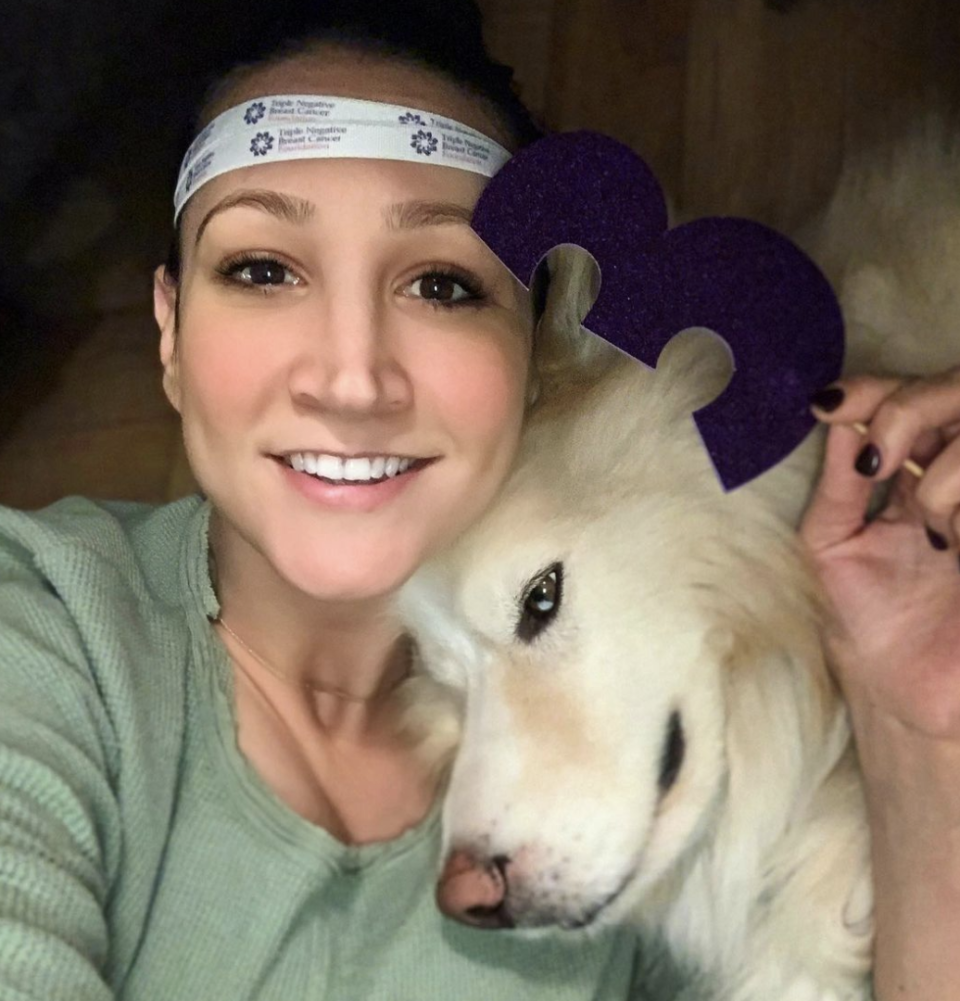Wearing pink isn’t enough
Wearing pink is not enough. It will not help cure breast cancer.
If I just burst your bubble, I’m not sorry. It’s the truth, and my friend Anna, who passed away from triple negative breast cancer at the age of 34, was not one to sugarcoat anything.
One in eight women will be diagnosed with breast cancer at some point in their life. If you happen to have a BRCA gene mutation like Anna did, that chance increases to 45%-85%.
Anna lived through four “Pinktobers” while she had cancer. She was relatively reserved about sharing details about her cancer journey, but spent time each October (commonly known as Breast Cancer Awareness Month) educating her corner of the internet about things they could do that weren’t about wearing pink.
Anna knew that not everyone had the capacity to donate to breast cancer research, so a lot of her advice centered around things that were free to do and accessible for anyone wanting to contribute to the cause.

While doing any of these things will not cure breast cancer, they very well could help save your life or your friends’ lives. If you want to wear pink while you’re doing them fine, but this October consider also doing one (or all!) of the following.
Breast cancer awareness tips
1. Give yourself a regular breast exam, and set a reminder in your phone to do one every month. “Feel it on the first” was a common thing Anna would remind her girlfriends to do. “Give yourself a good boobie rub down.. no matter how old you are,” she posted on Instagram. “Young women (and men) get breast cancer and are dying of breast cancer every single day. Get to know your body now and if something doesn’t feel right one day, don’t hesitate to take action.”
2. Get tested for the BRCA mutation if you have a family history of breast cancer or ovarian cancer. The test is a simple blood or saliva test, and is often covered by insurance if you have a family history.
Everyone has BRCA1 and BRCA2 genes, which normally help prevent tumors from growing. When there is a mutation, they don’t suppress cell growth like they’re supposed to, which increases a person’s risk for certain types of cancers.
Anna didn’t have any family history, but if you do and find out you have the mutation there are preventative options like, earlier and more frequent mammograms and having a proactive double mastectomy like Angelie Jolie.
3. Get a mammogram each year starting at 40. If you’re high risk because of family history or other factors your doctor may recommend starting sooner. Mammograms are covered by most health insurance companies under the Affordable Care Act and can help detect cancer earlier. The earlier breast cancer is detected the easier it is to treat and “regular mammograms can lower the risk of dying from breast cancer” according to the CDC.
4. Give blood. The Mayo Clinic estimates that around 25% of blood donations go to cancer patients. It’s critical to their care, as well as the care of so many others– in the next minute, 30 people will need blood. This was Anna’s top ask as it’s free to do and almost guaranteed to help someone in need. You can also donate about 6 times a year which means the impact you can have really adds up.

The game of what-if is a dangerous one to play, but I often wonder if Anna had seen a friend post about doing regular breast exams if she would have noticed something awry earlier. Maybe she would have asked a doctor to do a test for the BRCA mutation if someone had told her such a thing existed. Maybe that would have led to earlier mammograms and catching her cancer earlier. Maybe it would have made a difference, maybe not.
Anna passed away on Christmas Eve of 2021. I will never forget that phone call, and even now things like Facebook memories with her in them bring me to tears.
Anna wasn’t one to mince words, and she wasn’t one to back down from a cause she believed in. So that others might have a different outcome than her, she continued to try to educate and advocate until the very end—reminding people to do their monthly breast exam just three weeks before she passed away. I will forever be thankful for what she taught me, and hope that her message continues to help others.
So this October, yes, wear pink in support of finding a cure if you want to. But do something else, too.
Wearing pink is just not enough.

